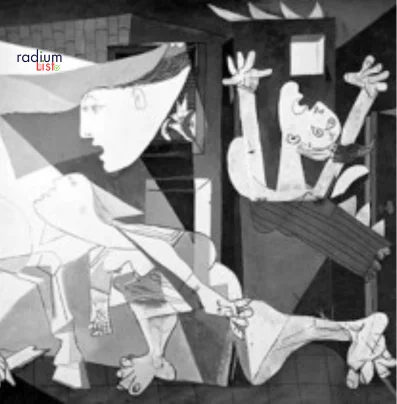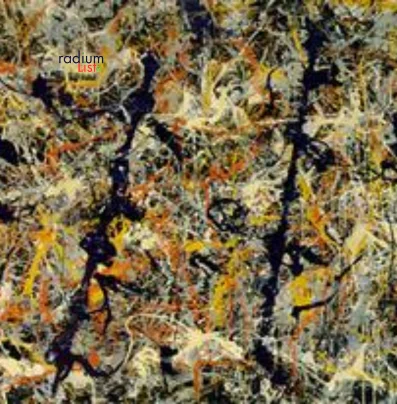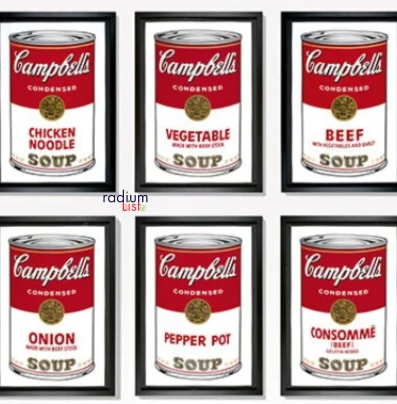10 Controversial Artworks That Redefined Art History
Artists have long been catalysts for controversy, challenging societal norms and encouraging new ways of thinking. Their role as provocateurs is to disrupt established structures and offer fresh perspectives on life. Throughout history, these daring individuals have pushed the boundaries of creativity, sparking debate and provoking thought.
Édouard Manet's Le Dejeuner sur l’Herbe (1863)
Édouard Manet's Le Dejeuner sur l’Herbe (1863)
Édouard Manet's iconic painting, Le Déjeuner sur l'Herbe, stands as a groundbreaking masterpiece that defied the conventions of 19th-century art.
Marcel Duchamp's Fountain (1917)
Marcel Duchamp's Fountain stands as a provocative symbol of artistic rebellion and innovation in the 20th century. When Duchamp submitted a urinal as a work of art to the Society of Independent Artists in 1917.
Édouard Manet's Le Dejeuner sur l’Herbe (1863)
Édouard Manet’s iconic painting, Le Déjeuner sur l’Herbe, stands as a groundbreaking masterpiece that defied the conventions of 19th-century art. When it was unveiled at the Salon des Refusés in 1863, it sparked a seismic shift in the art world, challenging traditional notions of propriety and beauty. The painting’s bold composition, depicting a nude woman lounging alongside clothed men in a pastoral setting, shocked viewers and incited intense debate among critics and spectators.
Manet’s deliberate departure from academic standards and his refusal to adhere to societal norms marked a pivotal moment in the history of art. Le Déjeuner sur l’Herbe became emblematic of the Modernist movement, inspiring subsequent generations of artists to explore new forms of expression and to challenge established conventions. Manet’s audacious vision and willingness to confront taboo subjects paved the way for the radical experimentation and innovation that would define the art of the 20th century.
Beyond its initial controversy, Le Déjeuner sur l’Herbe remains a symbol of artistic freedom and rebellion against the constraints of tradition. Manet’s fearless exploration of unconventional themes and compositions continues to resonate with audiences, reminding us of the transformative power of art to challenge, provoke, and inspire. In its defiance of convention, Manet’s masterpiece continues to captivate viewers and influence the course of art history, embodying the enduring spirit of artistic innovation and creative expression.
Marcel Duchamp's Fountain (1917)
Marcel Duchamp’s Fountain stands as a provocative symbol of artistic rebellion and innovation in the 20th century. When Duchamp submitted a urinal as a work of art to the Society of Independent Artists in 1917, he ignited a fierce debate about the nature of creativity and the role of the artist in shaping aesthetic discourse. The society’s rejection of Fountain challenged traditional notions of artistic merit and institutional authority, thrusting Duchamp into the forefront of avant-garde art movements.
Fountain’s contentious status as a ‘readymade’—an ordinary object designated as art by the artist’s declaration—sparked widespread controversy and discussion. Duchamp’s audacious assertion that the urinal constituted art raised profound questions about the boundaries of artistic expression and the definition of art itself. Despite facing criticism and skepticism from traditionalists, Fountain’s legacy endures as a testament to Duchamp’s revolutionary vision and his challenge to artistic conventions.
Beyond its physical form, Fountain symbolizes the power of artistic freedom and the rejection of established norms. Duchamp’s bold gesture continues to inspire generations of artists and scholars, prompting ongoing dialogue about the nature and purpose of art in society. Fountain’s enduring significance lies in its ability to provoke introspection and inquiry, challenging viewers to reconsider their preconceived notions of art and its meaning. As a touchstone for avant-garde expression, Fountain remains a beacon of creativity and defiance against convention in the ever-evolving landscape of contemporary art.
Pablo Picasso's Guernica (1937)
Pablo Picasso’s iconic mural, Guernica, stands as a poignant portrayal of the horrors of war and the resilience of humanity. Created in response to the devastating bombing of the Basque town of Guernica during the Spanish Civil War, the painting serves as a powerful indictment of violence and oppression. Through his masterful brushstrokes, Picasso captures the anguish and despair of the victims, depicting scenes of death and destruction with unflinching honesty.

Despite its initial controversy and polarizing reception, Guernica has emerged as a timeless masterpiece of political art, revered for its profound message and emotive power. Every element of the mural, from the anguished figures to the symbolic imagery of chaos and despair, speaks to Picasso’s condemnation of war’s senseless brutality and the enduring quest for peace.
Over the years, Guernica has become synonymous with Picasso’s legacy as a champion of human rights and social justice. Its monumental scale and profound symbolism continue to resonate with audiences worldwide, serving as a solemn reminder of the atrocities of war and the enduring resilience of the human spirit. As a symbol of hope and resistance, Guernica stands as a testament to the enduring power of art to inspire change and provoke reflection on the darkest aspects of human nature.
Jackson Pollock's Blue Poles (1952)
Jackson Pollock’s Blue Poles, also known as Number 11, 1952, stands as a groundbreaking masterpiece that forever changed the landscape of modern art. Employing his revolutionary drip technique, Pollock shattered conventional boundaries of artistic expression, transforming the act of painting into a dynamic performance of movement and emotion. Each flick and splash of paint on the canvas captured the artist’s raw energy and spontaneity, creating a visual symphony of color and form that defied traditional notions of composition and representation.
Initially met with skepticism and controversy, Blue Poles soon garnered recognition as a defining work of Abstract Expressionism, a movement characterized by its emphasis on individual expression and subconscious creativity. Pollock’s innovative approach to abstraction not only challenged the established norms of the art world but also inspired a new generation of artists to embrace experimentation and improvisation in their own work.
Today, Blue Poles stands as a testament to Pollock’s enduring influence and artistic vision, revered for its boldness, complexity, and sheer audacity. Its immersive quality and dynamic energy continue to captivate viewers, inviting them to explore the depths of the human psyche and the limitless possibilities of artistic expression. As a pioneering work of modern art, Blue Poles remains a timeless symbol of innovation and creativity, leaving an indelible mark on the history of art for generations to come.

Andy Warhol's Campbell’s Soup Cans (1962)
Andy Warhol’s iconic artwork, Campbell’s Soup Cans, transcends its status as a mere painting to become a profound commentary on consumer culture and the nature of artistic expression. Warhol’s decision to meticulously reproduce the familiar soup cans on a monumental scale challenges traditional notions of originality and authenticity in art. By elevating an everyday household item to the realm of high art, Warhol blurs the boundaries between the mundane and the extraordinary, prompting viewers to reconsider their perceptions of beauty and value.

Campbell’s Soup Cans ignited intense controversy and debate within the art world, with critics questioning the significance of reproducing mass-produced objects as works of art. Some hailed Warhol’s approach as a bold critique of consumerism and mass production, applauding his ability to elevate the ordinary to the extraordinary. Others, however, viewed it as a cynical ploy for commercial success, dismissing it as shallow and devoid of artistic merit.
Regardless of interpretation, Campbell’s Soup Cans remains a seminal work in Warhol’s vast body of work, emblematic of his fascination with popular culture and his willingness to challenge artistic conventions. Through his innovative use of repetition and serialization, Warhol not only revolutionized the art world but also transformed the way society perceives and consumes art. Campbell’s Soup Cans stands as a testament to Warhol’s enduring legacy as a pioneering figure of the Pop Art movement and a visionary provocateur who forever altered the course of contemporary art history.
Andres Serrano's Piss Christ (1987)
Andres Serrano’s controversial masterpiece, Piss Christ, ignited a firestorm of debate and discourse when it was unveiled to the public in 1987. By immersing a crucifix in a tank of his own urine, Serrano challenged traditional religious iconography and provoked a strong reaction from audiences around the world. The deliberate juxtaposition of sacred symbolism with bodily fluids shocked and outraged conservative circles, who viewed the artwork as a sacrilegious affront to their beliefs.
However, amidst the condemnation and backlash, Piss Christ also sparked important conversations about the nature of artistic expression and the boundaries of religious sensitivity. Supporters of the artwork hailed it as a bold and thought-provoking commentary on the commercialization of religion and the commodification of faith, arguing that art should be free to push boundaries and challenge societal norms.
Despite facing censorship and controversy, Piss Christ succeeded in its mission to provoke introspection and dialogue. It forced viewers to confront uncomfortable truths about their own biases and prejudices, prompting soul-searching discussions about the role of art in shaping culture and pushing the boundaries of acceptability.
In the decades since its creation, Piss Christ has transcended its controversial origins to become a symbol of artistic freedom and a testament to the enduring power of provocative expression. While divisive and contentious, Serrano’s artwork continues to inspire debate and reflection, reminding us of the importance of questioning established beliefs and challenging societal taboos.

Guerilla Girls' Do Women have to be naked to get into the Met. Museum? (1989)
The Guerilla Girls’ bold and thought-provoking billboard “Do Women have to be naked to get into the Met. Museum?” served as an important charge of the systemic gender bias and discrimination pervasive in the art world. Through their striking visual message, the Guerilla Girls confronted viewers with the stark reality of women’s underrepresentation and objectification within art institutions, particularly prominent museums like the Metropolitan Museum of Art. By highlighting the disparity between the portrayal of male and female artists in museum collections, the Guerilla Girls aimed to challenge entrenched stereotypes and demand greater inclusivity and recognition for women artists.

The provocative nature of the billboard sparked widespread discussion and debate, drawing attention to the need for systemic change within the art world. Critics and supporters alike engaged in dialogue about the importance of gender equality and diversity in cultural institutions, prompting calls for increased representation and opportunities for women artists.
Despite facing resistance and criticism from some quarters, the Guerilla Girls’ activism succeeded in raising awareness about the pervasive gender inequities in the arts and inspiring grassroots movements for change. Their bold and unapologetic approach to advocacy continues to resonate with audiences around the world, serving as a rallying cry for greater inclusivity and representation in the art world.
Ai Weiwei's Dropping a Han Dynasty Urn (1995)
Ai Weiwei’s audacious act of dropping a Han Dynasty urn sent shockwaves through the art world, challenging deeply ingrained perceptions of cultural heritage and authority. In a deliberate and provocative gesture, Weiwei shattered a symbol of China’s illustrious past, sparking intense debate and reflection on the meaning of cultural identity and the role of the artist in society.
By choosing to destroy such a revered artifact, Weiwei forced viewers to confront uncomfortable truths about the fragility of cultural heritage and the complex interplay between art, politics, and power. The act served as a bold statement against the notion of unquestioned authority, challenging the prevailing narratives that often shape perceptions of history and tradition.
Weiwei’s deliberate act of iconoclasm was intended to provoke discourse and scrutiny, inviting audiences to question the value and significance assigned to cultural artifacts and symbols. In doing so, he confronted viewers with the stark realities of cultural appropriation and the selective preservation of historical narratives.
Despite facing criticism and condemnation from some quarters, Weiwei’s bold intervention succeeded in sparking meaningful dialogue and reflection on the nature of cultural heritage and the responsibilities of both artists and society. His actions continue to resonate as a powerful reminder of the need to question authority and challenge established norms in the pursuit of truth and justice.

Tracy Emin's My Bed (1998)
Tracy Emin’s provocative artwork, My Bed, transcended traditional boundaries of artistic expression, offering viewers an intimate and unvarnished portrayal of the artist’s personal experiences. In a bold departure from conventional artistic conventions, Emin transformed her own bed into a visceral and emotionally charged installation, blurring the lines between art and autobiography.

By presenting her unmade bed as a central artistic statement, Emin challenged societal norms and expectations surrounding the portrayal of domestic spaces and personal narratives. The raw and unfiltered depiction of her intimate surroundings served as a poignant reflection on themes of vulnerability, identity, and human imperfection.
My Bed ignited a firestorm of controversy and debate within the art world and beyond, as audiences grappled with the unconventional nature of Emin’s artistic expression. Some viewed the artwork as a bold and courageous exploration of the human condition, while others criticized it as vulgar and sensationalist.
Regardless of the divergent reactions it elicited, My Bed succeeded in sparking meaningful dialogue and reflection on the nature of contemporary art and the boundaries of self-expression. Emin’s willingness to lay bare her most intimate experiences challenged viewers to confront their own preconceptions and assumptions, ultimately expanding the discourse surrounding art and its relationship to lived experience.
Damien Hirst's For the Love of God (2007)
Damien Hirst’s controversial artwork, For the Love of God, captivated the art world with its audacious and provocative exploration of wealth, mortality, and the commodification of art. At its center, the artwork featured a human skull encrusted with over 8,000 diamonds, creating a dazzling spectacle that challenged conventional notions of artistic value and morality.
With its staggering price tag and ostentatious display of opulence, For the Love of God sparked widespread debate and controversy within artistic circles and beyond. Critics condemned Hirst’s creation as a vulgar symbol of excess and materialism, while others praised its boldness and innovation.
By blurring the boundaries between art, commerce, and mortality, For the Love of God forced viewers to confront uncomfortable truths about the nature of wealth and the transience of life. Hirst’s decision to immortalize a human skull with precious jewels raised profound questions about the ethical implications of artistic expression and the role of money in shaping cultural value.
Despite the polarizing reactions it elicited, For the Love of God undeniably left an indelible mark on the art world, challenging viewers to reconsider their perceptions of art, wealth, and mortality. In its bold defiance of tradition and convention, Hirst’s artwork continues to provoke thought and dialogue, inviting audiences to grapple with the complex intersections of art, commerce, and the human condition.

